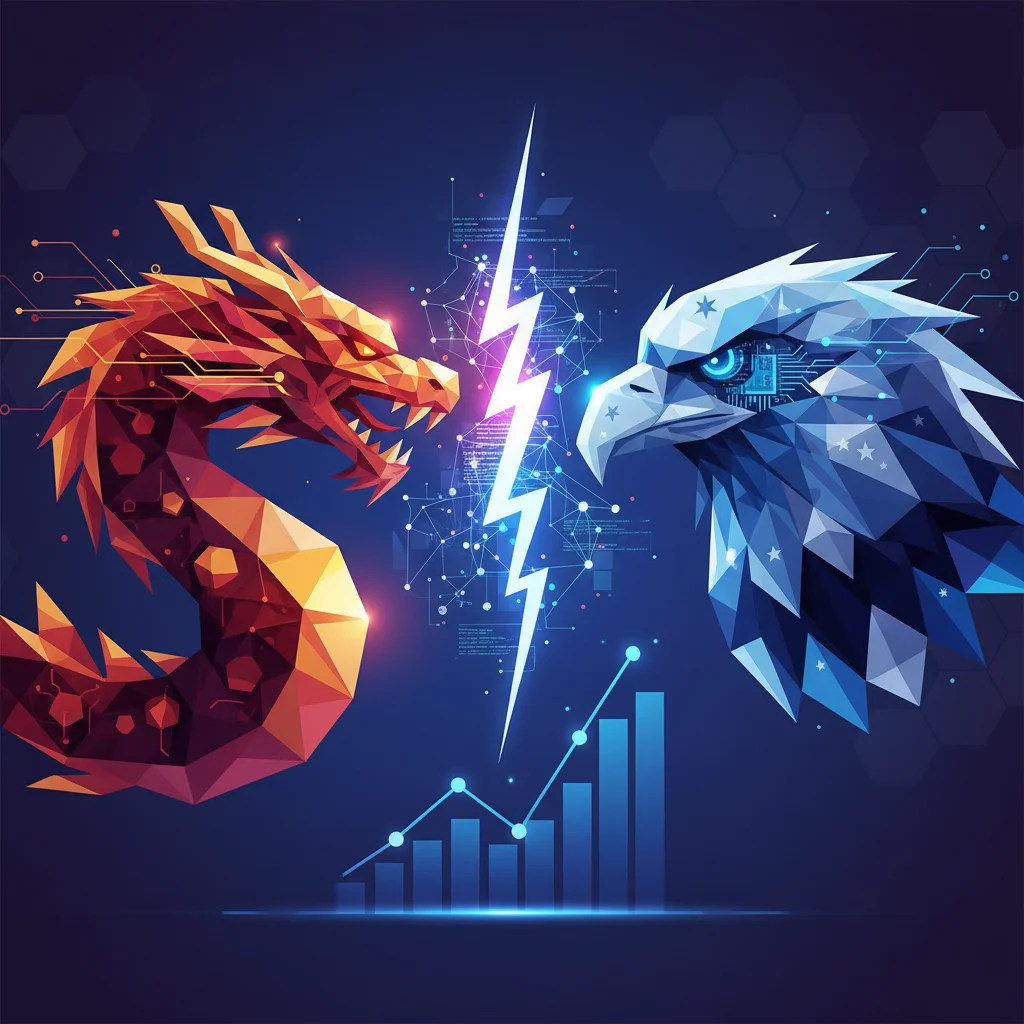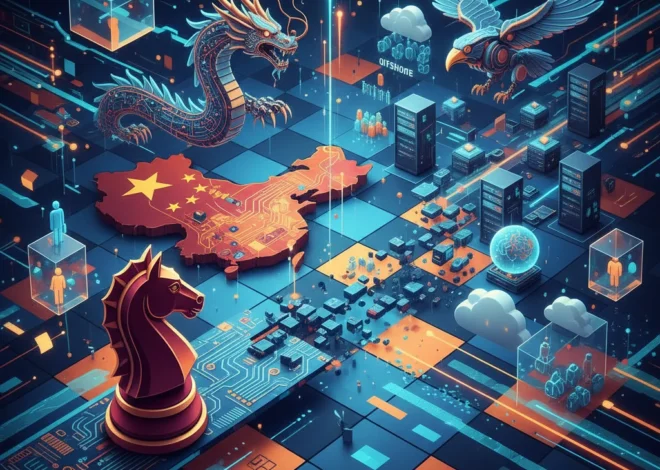
The AI Superpower Showdown: Is China Poised to Overtake the US?
The race for global leadership has entered a new, electrifying arena: artificial intelligence. It’s a contest that promises to redefine economic power, military strength, and societal structure for the next century. The central question, debated in boardrooms and government halls alike, is stark: Will China win the AI race? This very question was the focus of a recent live Q&A with the Financial Times, sparking a conversation that reverberates through the tech industry and beyond.
This isn’t just a competition for bragging rights. The nation that leads in artificial intelligence will likely set the global standards for everything from ethics and governance to the future of work itself. For developers, entrepreneurs, and tech professionals, the outcome of this race will directly shape career opportunities, the direction of innovation, and the very tools we use to build the future. So, let’s break down this complex geopolitical tech rivalry, looking beyond the headlines to understand the core strengths, weaknesses, and strategic plays of the two primary contenders: the United States and China.
The Case for US Dominance: The Unstructured Engine of Innovation
The United States’ claim to AI supremacy is built on a foundation of decades of open, curiosity-driven research and a vibrant, risk-tolerant startup culture. The major breakthroughs that define the current AI boom—from the transformer architecture that powers models like GPT-4 to the diffusion models creating stunning AI art—were born in American labs, both corporate and academic.
Companies like Google (with DeepMind and Google Brain), OpenAI, Meta, and Microsoft are not just market leaders; they are the epicenters of foundational research. This ecosystem thrives on a few key advantages:
- A Magnet for Global Talent: For decades, the world’s brightest minds in computer science and programming have flocked to US universities and tech hubs. This diverse talent pool creates a cross-pollination of ideas that is difficult to replicate.
- Venture Capital Fuel: The American VC ecosystem is unparalleled in its willingness to place massive bets on unproven, high-risk, high-reward ideas. This funding model allows startups to pursue moonshot projects that state-funded programs might deem too risky.
- Open-Source Culture: The ethos of sharing and building upon each other’s work is a cornerstone of the US tech scene. The release of open-source models and tools accelerates the pace of innovation across the entire industry, allowing even small teams to experiment with cutting-edge software.
The US excels at the “zero to one” phase of creation. Its strength lies in its chaotic, decentralized, and bottom-up approach, where the next big thing can emerge from a garage or a university dorm room. This is the engine that has consistently placed the US at the forefront of technological revolutions.
When the Cloud Goes Dark: A Deep Dive into the AWS Outage and the Fragility of Our Digital World
China’s Gambit: The Unrelenting Force of State-Driven Scale
China’s approach to artificial intelligence is a study in contrasts. Where the US is decentralized and market-driven, China is centralized, state-directed, and relentlessly focused on execution and scale. In 2017, Beijing unveiled its “Next Generation Artificial Intelligence Development Plan,” a national strategy to become the world leader in AI by 2030. According to a report from the Belfer Center for Science and International Affairs, China is already a “full-spectrum peer competitor” to the US in AI (source).
China’s strategy leverages its unique national characteristics:
- Massive Data Advantage: AI, particularly machine learning, is fueled by data. With a population of 1.4 billion and widespread adoption of digital payments and services, Chinese companies have access to datasets of a scale and granularity that are unimaginable in the West. This is a crucial advantage for training more accurate and capable models.
- Government Coordination and Investment: The Chinese government acts as a strategic investor and coordinator, pouring billions into AI research, infrastructure, and champion companies. This top-down approach ensures that resources are aligned with national priorities, from developing smart cities to enhancing state cybersecurity.
- Speed of Application and Commercialization: Chinese tech companies, like Baidu, Alibaba, and Tencent, are masters of “one to one hundred.” They excel at rapidly deploying AI technologies in practical applications, from e-commerce logistics and facial recognition payments to industrial automation.
If the US is the brilliant but chaotic inventor, China is the master engineer, taking proven concepts and scaling them with breathtaking speed and efficiency. Their focus is less on creating the next novel algorithm and more on integrating existing AI into the fabric of their economy and society.
The Battlegrounds: A Head-to-Head Comparison
To better understand the competitive landscape, it’s helpful to compare the two nations across several key domains of the AI ecosystem. The following table provides a snapshot of their relative strengths and weaknesses, based on current industry analysis.
| Metric | United States | China |
|---|---|---|
| Foundational Models & Research | Clear leader. Home to most top-tier large language models (LLMs) and generative AI research labs. | Rapidly catching up, but still largely iterating on Western-developed architectures. Strong in applied research. |
| Talent Pool | Global magnet for top-tier AI researchers and engineers, but facing a domestic STEM talent shortage. | Produces the largest number of STEM graduates, but the absolute top-tier talent often studies or works in the US. |
| Data Availability | Large datasets available, but access is fragmented and governed by stricter privacy regulations (GDPR, CCPA). | Unrivaled scale of centralized data due to population size and government policies, a key asset for training models. |
| Hardware (Semiconductors) | Dominates chip design (NVIDIA, AMD) and the intellectual property for manufacturing equipment. | Heavily reliant on foreign chips. US export controls are a major bottleneck, despite massive state investment in domestic production. |
| Cloud Infrastructure | Global dominance with AWS, Azure, and GCP, providing the essential backbone for AI development and deployment via SaaS models. | Strong domestic players (Alibaba Cloud, Tencent Cloud) but limited global reach. |
| Government Role | Significant R&D funding (e.g., DARPA) and increasing strategic coordination, but primarily a market-driven ecosystem. | Central planner, investor, and customer. A top-down, state-driven national priority. As of 2022, Chinese public and private AI investments were substantial, aiming for global leadership (source). |
Blackstone's Billion-Dollar AI Warning: Is Wall Street Asleep at the Wheel?
The Digital Infrastructure Front: Cloud, Software, and Security
The AI race isn’t just fought in research labs; it’s also won on the digital infrastructure that supports it. Here, the US holds a formidable, often underestimated, advantage.
The global cloud computing market is overwhelmingly dominated by American companies. Amazon Web Services, Microsoft Azure, and Google Cloud Platform form the bedrock on which a huge portion of the world’s digital services—including AI applications—are built. This gives the US immense strategic leverage. When a European AI startup or a Japanese enterprise decides to build a new machine learning product, they are most likely renting compute power and using development tools from a US-based provider. This creates a powerful, self-reinforcing ecosystem of software and services that is difficult for China’s primarily domestic-focused cloud players to penetrate.
Furthermore, the enterprise SaaS (Software-as-a-Service) market is an American stronghold. Companies like Salesforce, Adobe, and Microsoft have deep integrations into the workflows of businesses worldwide. As they embed generative AI features into their products, they create a massive distribution channel for American AI innovation, making it the default choice for millions of corporate users.
Finally, cybersecurity represents a critical and dual-use front in this competition. AI is a powerful tool for both defense—identifying threats and automating responses—and offense. The global battle for digital supremacy involves a constant, underlying conflict in cyberspace, and leadership in AI-driven security tools is essential for protecting a nation’s critical infrastructure and intellectual property.
What This Means for You: Navigating the AI Superpower Contest
This high-level geopolitical struggle has very real-world implications for those of us on the ground building and using the technology.
- For Developers and Tech Professionals: The competition is a massive engine for job creation and skill demand. Expertise in programming languages like Python, frameworks like TensorFlow and PyTorch, and platforms like AWS and Azure is more valuable than ever. The “talent war” between the US and China means companies and countries are investing heavily in education and offering premium compensation for top AI talent. According to the Stanford AI Index Report 2023, AI-related job postings have been steadily increasing across numerous countries (source).
- For Entrepreneurs and Startups: You don’t need to compete with OpenAI to succeed. The proliferation of powerful foundation models via APIs has created a Cambrian explosion of opportunities. The next wave of billion-dollar companies will be those that build innovative applications on top of these platforms, solving specific industry problems in areas like healthcare, finance, and education. The key is to focus on unique data, specific workflows, and superior user experience.
The race for AI dominance is far from over, and a clear winner may never emerge. The most likely future is a multipolar one, where the US continues to lead in foundational research and complex enterprise software, while China excels in hardware manufacturing, industrial automation, and consumer-facing applications at an incredible scale.
The CEO's Gambit: When Tech Titans Talk Troops, What's the Real Cost?
Ultimately, the most important race isn’t about which flag gets planted on the AI moon first. It’s about who can harness this transformative technology to create sustainable economic growth, solve meaningful human problems, and build a more prosperous and equitable future. That is the true prize, and it’s still very much up for grabs.


